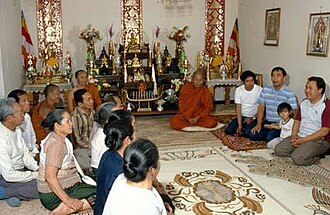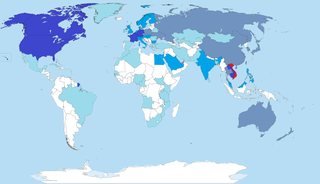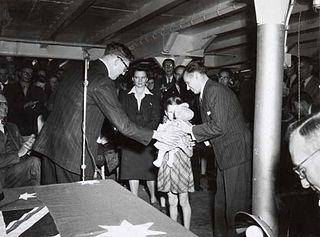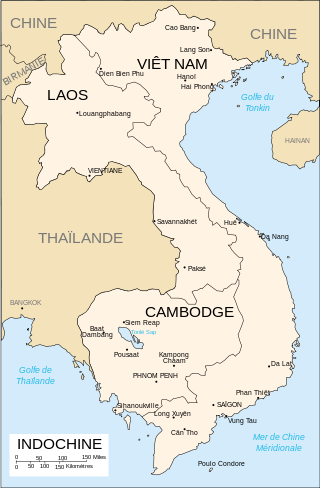History in Australia
Pre-migration and White Australia policy
Following the establishment of the Commonwealth of Australia on 1 January 1901, one of the first pieces of legislation passed was the Immigration Restriction Act of 1901, infamously known as the ‘White Australia policy’. The law placed restrictions on non-European immigration and made it difficult for Asians in particular to migrate to Australia. [6] The act required that all migrants pass a European language dictation test in order to stay in the country. [7] Subsequently, most Asian migrants were unable to pass the test, as it was administered at the discretion of immigration officials. The intention of keeping Australia white was bolstered by Edmund Barton, the nation’s first prime minister, who said of the ‘Chinaman’:
“I do not think either that the doctrine of the equality of man was really ever intended to include racial equality. There is no racial equality. There is basic inequality. These races are, in comparison with white races—I think no one wants convincing of this fact—unequal and inferior.” [8]
At the time, the overwhelming majority (98%) of Australians were white. [9] In 1958, the requirement to pass the dictation test was removed and in 1975, the Whitlam government effectively ended the White Australia policy by passing the Racial Discrimination act, [10] thus creating a path for Asian migration to commence in the years following.
The Colombo Plan
The first instance of Lao people staying in Australia consisted primarily of students who arrived through the Colombo Plan. [11] Approximately 150 people of Laos-descent resided in Australia pre-1975, and by the beginning of 1975 there were over 600 Indochinese students in the nation in total. [12]
Mass migration of Indochinese refugees, 1970–80s
In 1975, the abolition of the Kingdom of Laos and subsequent establishment of a communist state led to a tenth of the Lao population fleeing the country. [13] The Australian Government established the Humanitarian Program in 1977, as a response to the influx of Indochinese migrants seeking asylum in the country which allowed Lao refugees to settle in Australia [14]

In mid-1976, there were over 400 Laos-born people in Australia, [15] and by 1986 this figure expanded to over 7000. [16] The Lao constituted a small portion of Indochinese refugees, compared to over 80,000 Vietnamese and 13,000 Cambodians who resettled in 1986. [5] During this migration period, Lao people crossed the Lao-Thai border by boat or by swimming and settled in Thai refugee camps. Most Lao people who migrated by boat were accompanied by their spouses, relatives and/or friends, in contrast to the experiences of other Indochinese refugees who were often separated from their family and friends during their journey to the Thai refugee camps. [17]
Experience in migrant centers, 1970–80s

Following mass migration in the mid-to-late 1970s, Lao people amongst other Indochinese refugees were initially housed in migrant hostels. Commonwealth Hostels Limited, a government-sponsored organisation, operated 25 hostels [18] which, in addition to accommodation, provided English-language courses, healthcare, catering and welfare services to new migrants. [2] Several hostels in New South Wales were located in Cabramatta, Westbridge and East Hills, which has influenced the establishment of Indochinese enclaves near these areas and the broader Fairfield Local Government Area (LGA) in the present 2010s. [19] [20] In Victoria, there were migrant centers in Broadmeadows, Nunawading and Preston, and in South Australia, there was a hostel in Glenelg and Smithfield. [21]
Initial stays in these migrant centers were short-lived with many Lao people leaving due to dissatisfaction with the food (22.6%) and a desire to move in with relatives and close friends in the community (54.8%). A quarter of Lao migrants left the centers in less than a month, and a further 39 percent left within 1–3 months. However, Lao people still perceived some benefits from their stay in the centers, including the ability to have paperwork processed which would allow them to integrate into Australian society (33.9%) and access to English-language classes (9.7%). [22]
Lao people and other Indochinese ethnic groups chose to form enclaves in the Fairfield LGA nearby the migrant centers to be close to their relatives and friends. This allowed Lao people with low English proficiency levels to comfortably go about daily life without the obstacle of a language barrier impeding them. Other factors influencing the Lao people’s decisions to settle in Fairfield LGA included the affordability of housing and proximity to their children’s schools. For Lao people who chose to live in the Western suburbs outside of the Fairfeld Municipality, the dominant factor influencing this decision was a desire to be closer to their job. [22]
Settlement of Lao people in Australia, 1990s
In the 1990s, the process of becoming an Australian citizen was less stringent compared to other countries which motivated Lao people to take up citizenship. In the US, the naturalization process required at least five years of permanent residence in the country, [23] whereas the Citizenship Act in Australia allowed immigrants to become citizens with only two years of residence in the country provided they had basic English proficiency skills. [24] In 1984, the act was amended to provide exemption to individuals over 50 applying for citizenship, recognizing the difficulty for older individuals in learning English. [24] The majority of Lao people who settled in Australia attained citizenship within their first three years in the country. More than three quarters of Lao refugees became Australian citizens from 1975 to the 1990s, compared to 65 percent of Cambodians and 63 percent of Vietnamese refugees. [17]
Impact of settlement on Lao family structure
Relations between Lao women and their spouses were markedly impacted upon migration to Australia, with 95 percent of Lao refugees stating their relationship with their husband or wife had changed since coming to Australia. Many women who were designated housewives in Laos had to join the Australian workforce as relying on a single source of income from the husband was insufficient for the cost of living in Australia. [17] Gender dynamics shifted to more evenly distribute household labour amongst men and women - Lao women stated that their husbands had taken up more household duties in comparison to back home in Lao where typically the patriarch of the household would finish work and spend the rest of their leisurely time drinking with friends. [17] However, a challenge faced by some Lao women was the threat of domestic violence, which made recently arrived migrants particularly vulnerable due to their lack of support system. Back in Lao, violence in the home was typically prevented or minimised through intervention by family and friends, however in Australia, this was not an option for some Lao women. Factors contributing to the propensity for Lao men to become violent upon migration to Australia included stress and trauma from the migration experience and financial-related pressures. [25]
Employment in Australia
In the 1970s, a third of Lao people secured employment through connections with friends and relatives, with many jobs concentrating in the manufacturing industry. A smaller proportion (28.2%) of Lao-Australians stated they utilized resources provided by migrant centers to secure jobs including the assistance of Employment Officers. [22] For unemployed Lao people looking for work, low levels of English proficiency (85.7%) were the dominant obstacle that preventing them from finding employment followed by a lack of job vacancies (42.9%). During the 1990s, Lao women typically worked in factories along with Lao men, although some men worked as janitors, gardeners or in construction. [17]
Educational experiences
Many Lao children faced language barriers in educational settings and reportedly took twice as long to complete homework compared to Australian children. Despite these challenges, Lao children rapidly integrated into Australian society and began to adopt Western values over Lao traditions. Lao children became less likely to wholly obey their parent's wishes as was tradition in Laos. The assimilation of Lao youth into Australian culture was named a source of conflict with their parents, who expressed concern with their children dating and attending school functions and parties as was commonplace in Australia. [17]














